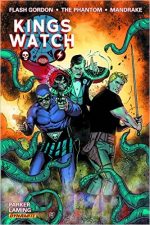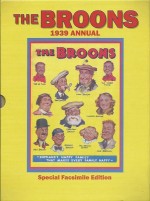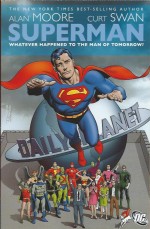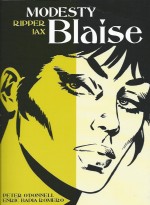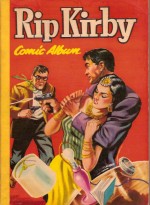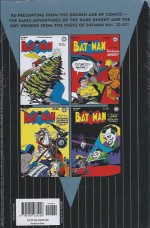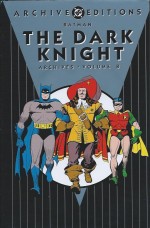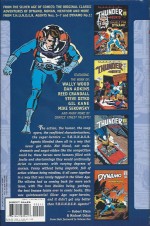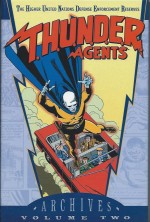
By Burne Hogarth with Robert M. Hodes & Skip Kholoff (Dark Horse Comics)
ISBN: 978-1-61655-537-5
Modern comics and graphic novels evolved from newspaper comic strips. These daily pictorial features were – until relatively recently – overwhelmingly popular with the public and highly valued by publishers who used them as a powerful tool to guarantee and increase circulation and profits. From the earliest days humour was paramount; hence our terms of usage “Funnies†and, of course, “Comicsâ€.
Despite the odd ancestor or precedent like Roy Crane’s Wash Tubbs (comedic when it began in 1924, but gradually moving through mock-heroics to light-action to become a full-blown adventure serial with the introduction of Captain Easy in 1929), the vast bulk of strips produced were generally feel-good laughter-makers or occasional child-oriented fantasy.
The full blown dramatic adventure serial began on January 7th 1929 with Buck Rogers and Tarzan which both debuted the same day. Both adapted pre-existing prose properties and their influence changed the shape of the medium forever. The 1930s then enjoyed an explosion of such fare, launched with astounding rapidity and success. Not just strips but actual genres were created in that decade which still impact on today’s comicbooks and, in truth, all our popular fiction forms. In fact, your comicbooks started as reprint compilations of such newspaper circulation-fodder…
In terms of sheer quality of art, the graphic narrative iteration of Edgar Rice Burroughs’ novels by Canadian commercial artist Harold “Hal†Foster were unsurpassed, and the strip soon became a firm favourite of the masses. Supplemented by movies, books, a radio show and ubiquitous advertising appearances, White God of the Jungle John Clayton, Lord Greystoke soon became a meta-character. Just like Sherlock Holmes, Tarzan became “real†to the world.
Foster initially quit the strip at the end of the 10-week adaptation of the novel Tarzan of the Apes. He was replaced by Rex Maxon, but returned (at the insistent urging of Burroughs himself) when the black-&-white daily was expanded to include a lush, full colour Sunday page featuring original adventures.
Leaving Maxon to capably handle the Monday through Saturday progression of novel adaptations, Foster produced the epic Sunday page until 1936 (233 consecutive weeks) after which he momentously moved to King Features Syndicate to create his own strip landmark and weekend masterpiece. Prince Valiant in the Days of King Arthur launched on February 13th 1937 and is still with us today.
Once the four month backlog of material he had built up was gone, Foster was succeeded by a precociously brilliant 25-year old artist named Burne Hogarth (1911-1996): a young graphic visionary whose superb anatomical skill, cinematic design flair and compelling page composition revolutionised the entire field of action/adventure narrative illustration.
The galvanic modern dynamism of the idealised human figure in today’s comicbooks can be directly attributed to Hogarth’s pioneering drawing and, in later years, his dedicated efforts as an educator.
When Hogarth in turn left the strip he found his way into teaching (he co-founded – with Silas H. Rhodes – the Cartoonist and Illustrators School for returning veterans which evolved into the New York School of Visual Arts) and also authored an invaluable and inspirational series of art textbooks such as Dynamic Anatomy and Dynamic Figure Drawing which influenced generations of aspiring artists.
In the early 1970s Hogarth was lured back to the leafy domain of legendary Lord Greystoke, producing – with co-writer Robert M. Hodes and lettering assistant Skip Kholoff – two magnificent volumes of graphic narrative in the dazzling style that had captivated audiences more than thirty years previously. Recently both were bundled into a magnificent hardback edition by Dark Horse (also available digitally through Kindle and ComiXology) as a magnificent tribute to Hogarth’s mastery.
Tarzan of the Apes is a strong candidate for the title of first Graphic Novel. Originally released in 1972, it stunningly adapts the first half of ERB’s groundbreaking popular classic in large bold panels, vibrantly coloured, accompanied by blocks of Burroughs’ original text. The electric visuals leap out at the reader in a riot of hue and motion as they recount the triumphant, tragic tale of the orphaned scion of British nobility raised to puissant manhood by the Great Apes of Africa.
The saga follows his life as cub of loving she-ape Kala, his rise to prominence amongst his hirsute tribe and how he masters all the beasts of his savage environment. The mighty, brilliant foundling – through intellect alone and the remnants of his father’s papers – learns to read and deduces that he is a Man, but still inflicts brutal vengeance on the human tribesmen responsible for killing beloved, devoted Kala before submerging himself in the ways of the tribe.
The adaptation ends just prior to the arrival of the white woman who will reshape Tarzan’s destiny forever…
Four years later Hogarth returned to his subject, but instead of completing his bravura interpretation of Tarzan of the Apes he instead produced an adaptation of the short tales which formed the composite novel Jungle Tales of Tarzan.
That book was a series of episodes reminiscent of Kipling’s “Just So†stories, set before the first fateful meeting with Jane Porter and the Ape-Man’s introduction to civilisation. Instead it related how and when the Lord of the Jungle confronted various cognitive stages in his own intellectual and physical development.
If that sounds dry, it’s not. Burroughs was a master storyteller and his prose crackles with energy and imagination. With this book he was showing how the Ape-man’s intellectual progress was a metaphor for Man’s social, cerebral and even spiritual growth from beast to human. He also never forgot that people love action and broad belly-laughs.
Hogarth was also an acclaimed intellectual and the four tales he adapted here afforded him vast scope to explore his cherished perfect temple that was the Ideal Man. The flowing organic compositions he created for his Jungle Tales of Tarzan are strengthened by the absence of colour, allowing the classicism of his line-work to create stark divisions of form and space that contribute to the metaphysical component of his subject.
The monochrome magic begins with ‘Tarzan’s First Love’ with the adolescent finding himself increasingly drawn to fetching young She-Ape Teeka. However, no matter what he did, the young maiden just wasn’t interested in her ardent, hairless admirer…
Next to enthral is a savage tale of comradeship as the human befriends mighty elephant Tantor who proves valiant and true following ‘The Capture of Tarzan’ by the local tribesmen responsible for Kala’s death, after which ‘The God of Tarzan’ sees him overdose on his dead father’s books and suffer a brain-expanding religious experience…
The drama ends here in a riot of phantasmagoria as young Tarzan steals spoiled, cooked meat from the native villagers and endures ‘The Nightmare’.
Don’t let my effusive verbiage deter you, folks: you don’t need a dictionary to enjoy this work; all you need are eyes to see and a heart to beat faster. This is all vital, violent motion, stretching, leaping, running, fighting, surging power and glory: guaranteed to give indolent comic lovers all the thorough cardio-vascular work-out they’ll ever need…
Edgar Rice Burroughs was a genius at engaging the public’s collective imagination, whilst Hogarth was an inspired and inspirational artisan who, as well as gradually instilling his pages with ferocious, unceasing action, layered his works with subtle symbolism. Heroes looked noble, villains suitably vile and animals powerful, beautiful and deadly. Even vegetation, rocks and clouds looked spiky, edgy and liable to attack at a moment’s notice…
This compilation is a vivid visual masterwork: a coiled-spring tension of vigorous vitality and explosive action and dream come true for every generation of dedicated fantasists to enjoy.
Magnificent, majestic, awe-inspiring, crucial comics entertainment.
© 1972, 1976, 2014 Edgar Rice Burroughs, Inc. All rights reserved. Tarzan ® is owned by Edgar Rice Burroughs Inc., and used by permission.


